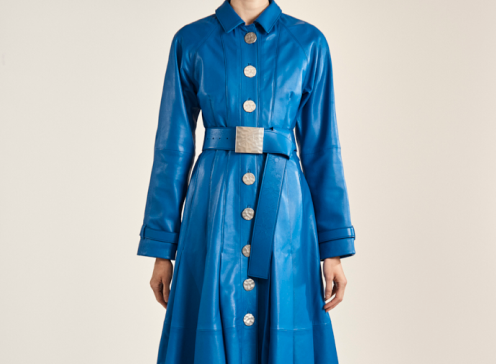Part of what makes Mount Everest so compelling to climbers—beyond the sheer scale of that peak—are the punishing conditions. Even in the warmest months, the summit is below zero, and can get up to -75 degrees Fahrenheit in the winter. Then there’s the wind. Screaming down from the ice fields, catching climbers at every angle, those gusts are why layered clothes matter.
So, when famed mountaineer Conrad Anker sought to replicate the 1924 climb of George Mallory and Sandy Irvine, right down to their clothing choices, it seemed a risky venture at best. At worst? People feared he may end up like the doomed pair, disappearing into the mountain along with his wooly jumper, fur-lined motorcycle helmet and hand-knit scarf.
But Anker and his climbing partner had a secret advantage—one that may have even taken Mallory and Irvine to the summit before they got trapped on the descent:
Silk.
The layers of leather, fur, and wool in those old-time climbing outfits helped to combat the wind, but for true warmth and sweat-wicking performance, those long-ago climbers knew that silk was a must-have. For three layers from skin to wool, it was lightweight silk, heavyweight silk and silk vest.
Anker, along with other climbers who’ve used the fabric, noted that the natural layers trapped warm air well, were highly durable, water-resistant and breathable. They also allowed for a better range of motion and were simply more comfortable. Maybe that 1924 kit list isn’t so absurd after all (except, perhaps, for that motorcycle helmet). And maybe, revisiting that history and bringing silk back to its former glory could come with a futuristic twist.
From Peak to Peloton
Climbers haven’t been the only athletes to regard silk as a performance-enhancing secret. Famous Italian cyclist and Tour de France champion Fausto Coppi pioneered the use of silk jerseys on the racecourse.
Silk jerseys cut through the air more cleanly, Coppi and his imitators discovered, and that allowed for greater speed—even a few seconds gained could be a huge advantage.
By the 1950s, most track cyclists were wearing silk jerseys rather than the traditional lightweight wool favored previously. (The word “jersey” actually comes from a reference to woolen knitted cloth.)
Silk is also part of Olympics sportswear history, also harkening back to 1924, when silk was seen as a lighter, cooler fabric than the traditional wool outfits worn in previous years.
Switch to Synthetics
Silk fell out of favor with the rise of synthetic fibers, including nylon, acrylic and polyester, because athletes had more choices when it came to activewear—and brands have since been enormously successful in creating gear that is both lightweight and fade resistant.
And yet, these synthetic fibers come with some potentially heavy baggage. Since these are all forms of plastic, they create environmental considerations that many consumers see as troubling.
Also, let’s be honest, there’s the stink. Anyone who’s worn a poly-blend shirt through numerous sweaty workouts knows even a serious scrub session doesn’t completely remove the odor—as you find out quickly enough when you’re at the gym, re-activating that smell-producing bacteria.
Perhaps the solution isn’t to re-engineer these fabrics from the chemistry up, but to revisit those roaring 1920s climbing kits and post-war cycling tracks, when silk was recognized as the performance-boosting fabric it was. But this time, we can make it even better—and we can even blend it with modern synthetics for the best of both worlds.
History Meets Innovation
Vintage looks are fun, but there’s much more to the return of silk than conveying a retro vibe. It involves tapping into the considerable benefits of the fabric and getting to an even higher level of performance.
At Evolved By Nature, we’ve developed a way to bring the amazing properties of natural silk back to performance wear by liquefying natural silk and using it to finish or treat other fabrics, such as nylon. That maintains the advantages of that fabric, while giving it the benefit of silk.
We call it Activated Silk, created from the raw silk spun by silkworms that eat organically grown mulberry leaves, and transformed through a unique process that turns that silk into liquid through the use of water and salt.
The end result is a platform chemistry with hundreds of possible molecular compositions, meaning that the opportunities for using silk to its full potential can finally be realized. Fabrics, personal care, even medical products—Activated Silk is flexible enough to be integrated into a diverse array of options.
Plus, it’s non-toxic, sustainably produced, and offers the kind of performance that keeps customers coming back: moisture-wicking, anti-pilling, wash durability, anti-shrinking and longer-lasting colors.
Those early mountaineers were onto something when they used silk to reach greater heights. Now, it’s time to take silk to the summit of its potential.
